The Nuclear Henry Ford Moment
For the first time ever, it will be possible to make Nuclear energy cost LESS than energy from fossil fuels. And that means Nuclear done right can fully solve Energy Transition globally. Here's how...
I contend that right here, right now in 2024, we’ve just reached an unprecedented moment in world history, creating a new opportunity to dramatically reduce the cost of nuclear energy, so that safe, clean, limitless nuclear energy actually costs less than energy produced from coal or gas! I’ve begun calling this the Nuclear Henry Ford Moment.
Consider how strong the global political commitment to Energy Transition has become. The will to solve climate change and reduce dependence on fossil fuels is so strong that we’ve already spent $4.6 trillion dollars in the last two decades alone on renewable energy:
Yet even after 25 years of heavy government subsidy, Wind and Solar combined still just barely supply about 5% of global energy demand! Clearly, Wind and Solar alone aren’t going to solve this problem, and adding batteries won’t change that reality. To fully replace the energy we derive from fossil fuels today, this planet urgently needs to build about 9 TW (i.e. 9,000 GW) of new clean electric generation capacity. The $4.6tn already spent on renewables (primarily, Wind and Solar) evidences that the will to solve this problem is more than strong enough to warrant investment on an unprecedented scale. We’re just investing in the wrong things.
The entire problem could be solved with nuclear energy by 2050. But conventional nuclear power, meaning large nuclear power stations based on Light Water Reactor (LWR) technology, like those in service today, simply costs too much and takes too long to build. In order to solve this problem, we need to completely change the way we think about building nuclear power stations.
Comparing the left and center columns in the above table, it should be clear that building nuclear power “the old way” simply isn’t economically viable if we’re talking about fully solving Energy Transition with nuclear power. Just fulfilling the COP28 pledge to “Triple Nuclear by 2050” will prove challenging using old-school nuclear power technology.
To put the problem in perspective, to fully replace the energy we derive from fossil fuels today, we’d need to build about 9TW of clean electric generation capacity. That equates to about 4,500 more nuclear power stations all around the world, with average electric generation capacity of 2GW each. That’s not just tripling nuclear energy. To fully solve this problem with nuclear power will require a 24x increase in nuclear power generation capacity, not just a 3x increase. And if we can get the cost substantially lower than the current cost of energy from coal and gas, demand will be much higher than just replacing what we get from fossil fuels today.
To increase nuclear energy by 24-fold using the same approach that’s been taken to building nuclear power in the past would simply cost too much and take too long to be practical. And even if we could somehow build that many conventional nuclear plants, we’d never be able to ramp uranium mining and enrichment up fast enough to fuel them. We need to explore completely new approaches to building nuclear energy in order to seize the opportunity presented by the Nuclear Henry Ford moment.
As shown in the right-most column in the chart above, both the cost of nuclear energy and time time required to build it could be reduced dramatically by embracing the latest “advanced nuclear” technologies and then taking a completely different approach to how we build nuclear power plants.
We need to pre-manufacture entire nuclear power plants in factories, on fully robotic assembly and test lines.
The enormous demand for 9+ TW of clean electric generation capacity globally over the next 25 years fundamentally changes the economic equation. The best analogy is to Henry Ford’s invention of the Assembly line.
Before Ford’s assembly line, automobiles were like private jets are today: Everybody wanted one, but only a handful of the wealthiest people in society could afford one. Ford realized that if he could capture the economies of scale inherent to assembly line mass-production, he could bring the cost down to the point that ordinary people could afford an automobile. The rest is history, and it profoundly changed the world.
The analogy fits perfectly. We’ve been building nuclear reactors for over 75 years now, but to this day, less than 450 power reactors are operating worldwide. They only produce 371 GW of electricity. Anything that’s being produced at the rate of only a few units per year can’t possibly benefit from assembly line mass production, because there simply isn’t enough volume to keep an assembly line running. And the nuclear power plants we have in service today are far too big to be built on assembly lines.
But if we could solve the build-time problems conventional nuclear plants face and get the cost down to less than the cost of energy from fossil fuels, there would be demand for at least 24x more nuclear power stations globally than we have today. But how could we possibly reduce both the cost and build-time so much that nuclear power could cost less than coal or gas-fired powerplants? Believe it or not, the best case study for how to solve this problem is McDonald’s Restaurants:
McDonald’s can literally build a new restaurant in less than 24 hours. How could this be possible? It’s because they pre-manufacture the entire restaurant in a factory. The restaurant is assembled on-site from modular components the size of standard 40’ shipping containers. This allows the entire modular restaurant to be shipped anywhere on earth by containership, and then delivered to the building site by truck, where the modules are craned into place. The new restaurant can literally begin selling hamburgers 1 day after the first truck arrives carrying the first module.
The best way to solve Energy Transition globally is to design modular nuclear power plants that can be built in factories, on fully robotic assembly lines, and then delivered anywhere on earth by containership.
Unlike conventional nuclear power plants which can take 7+ years to build because of the need for bespoke on-site construction, a 21st century Gigawatt nuclear power station could be built in less than a year, and would look something like this:
Instead of building a gigantic 1 GW nuclear reactor on-site in the traditional manner, modular nuclear reactors are built in factories, in the form factor of ISO standard 40’ shipping containers. Assuming that each reactor produces 100MW of thermal energy, 20 to 25 reactors would be needed to build a 1 Gigawatt (electric) power station, depending on what type of turbine is used to convert heat energy from the reactors into electricity.
And the turbine is the next thing that needs to change. Conventional nuclear plants use steam turbines like this Siemens SST-9000 to convert heat energy from the reactor into electricity:
This gigantic steam turbine costs well over a billion dollars, and is far too big to modularize and deliver in its fully assembled form. It’s also only about 40% efficient, meaning that it wastes most of the heat energy produced by the nuclear reactor! But a new technology known as supercritical carbon dioxide turbines fully solves this problem. CO2 turbines are 1/10th the cost and weight of steam turbines, and are much more conducive to modularization. They’re also much more thermally efficient, and that directly translates to fewer reactor modules being needed to build the power plant.
The CO2 turbine pictured above is rated at 10MW(electric). A larger version rated at 500MW(e) could fit in a single 40’ shipping container-sized module. Only two such modules would be required to replace the gigantic Siemens SST-9000 pictured in the prior photo.
To solve energy transition, we need to design entire modular nuclear power plants, just as McDonald’s has designed modular restaurants, where every component of the power plant (reactors, turbines, generators, etc.) are all delivered in modules the size of 40’ shipping containers. All the technology needed to do this has already been proven, but it’s never been deployed on anything remotely close to the scale needed to solve energy transition.
Solving the cost problem
It would take about 200,000 reactors rated at 100MW(t) each to fully replace all the energy we derive from fossil fuels today. The cost of building anything in such high volume can be reduced dramatically by embracing the economies of scale inherent to assembly line mass-production. Henry ford proved this in the early 20th century.
If you’re going to build 200,000 nuclear reactors, the only sane way to do that would be on fully robotic assembly and test lines that deliver immaculate quality control. And once you do that, the economies of scale inherent to assembly line manufacturing will bring the unit cost down dramatically. It’s exactly the same chicken-and-egg scenario as Henry Ford’s assembly line.
You simply can’t do this with conventional nuclear technology! Conventional large-scale nuclear reactors are already designed to use some modular components that are built off-site whenever possible, but there’s still a lot of bespoke on-site construction that simply cannot occur in a remote factory because the components manufactured would be too large to transport. It has to be built on-site, and that means conventional nuclear will always have a private jet price tag as opposed to a Model T Ford price tag.
Copenhagen Atomics’ low-cost reactor was designed around the ISO Standard 40’ shipping container form factor precisely because that would enable assembly line mass production and practical, economic delivery anywhere on earth. And that’s the design concept we need to embrace for all powerplant components, not just the reactors.
Conventional nuclear plants require an enormous amount of cooling water, which necessitates building them adjacent to oceans or rivers. You can’t build a conventional nuclear plant in the middle of the desert. But advanced molten-salt cooled reactors can be built anywhere. China has already built one in the middle of the Gobi desert just to prove this point.
Sourcing the Fuel
There’s another reason we can’t solve Energy Transition with conventional nuclear energy based on low-enriched Uranium fuel. That reason is simply that we wouldn’t be able to ramp up Uranium mining and enrichment fast enough, and even if we did, doing so in such massive scale would further increase weapons proliferation risk.
Large-scale conventional reactors like the Westinghouse AP1000 or the KNHP APR-1400 have higher power ratings than small advanced technology reactors like Copenhagen Atomics’ design, so we wouldn’t need 200,000 of them to solve Energy Transition. We’d only need about 9,000 more AP1000’s to completely replace the energy we derive from fossil fuels today. But there’s a catch: They cost between $10 and $15 billion U.S. dollars apiece! The Copenhagen Atomics reactor has a target unit production cost well under $10 million USD. That’s a 1,000:1 difference in unit cost, but after adjusting for the AP1000’s much higher power rating, the actual cost differential on a per-MW basis is more like 50:1.
But even if we could somehow build 9 TW of new conventional nuclear generation capacity, we could never produce enough low-enriched Uranium fuel to power all of them. And even if we could, the result would be that we’d be generating more spent nuclear fuel waste at 24x the current rate. The public is already outraged by the nuclear waste already in storage. That’s mostly because they have been misled to believe it’s much more dangerous than it really is, but the fact remains that the public strongly opposes further accumulation of spent nuclear fuel. We should focus on solutions that get rid of the spent nuclear fuel we already have in storage, not on making more of it!
When you use a Thorium fuel cycle rather than fueling reactors with low-enriched Uranium (LEU), each reactor only needs to be fueled with Uranium fuel once, and a relatively small load of fuel will suffice. A really fancy Thorium reactor like the one Copenhagen Atomics is building doesn’t even need that initial load of LEU. It can be started with a shot of reprocessed spent fuel waste left over from today’s fleet of LWRs. Then it refuels itself by making more fissile Uranium-233 from Thorium, which is 4x more plentiful in Earth’s crust than Uranium, and which doesn’t require enrichment, eliminating weapons proliferation risks.
By focusing on a Thorium fuel cycle that doesn’t require enriching uranium, the perception that a nuclear weapons program might be the true intention of the country building this kind of nuclear reactor can be eliminated or greatly reduced. Someone whose true intentions were to build nuclear weapons wouldn’t waste their time on Thorium, which was rejected by the Manhattan project precisely because it’s so poorly suited to making nuclear weapons. See my prior substack post on the history of nuclear energy for more perspective on that topic.
Can you see now how Thorium is the only realistic fuel to choose if you truly intend to scale nuclear up to fully solve Energy Transition for the entire planet? China understands this very well, and they’re already acting on that understanding by announcing their intention to power their future containership fleet with Thorium-fueled molten salt reactors. China is also building their own domestic Thorium nuclear fuel supply chain, and has plenty of Thorium reserves under their own soil to power the entire planet for hundreds of years. The West has already fallen badly behind. China will achieve energy- and economic dominance over the West within 20 years if we don’t immediately change our ways and catch up to China on advanced nuclear energy technology development!
This is Big. Too big for small fish!
The Nuclear Henry Ford Moment of opportunity is upon us right now, but the investment proposition is even more daunting than the decision Henry Ford faced, which could have bankrupt him had he misjudged the supply/demand situation. We’re not talking about mass-producing automobiles anymore. Now we’re talking about mass producing state-of-the-art 4th generation nuclear reactors. That’s a big jump in complexity and cost.
To truly seize the Nuclear Henry Ford Moment, someone would need to do five things simultaneously:
Design modular nuclear reactors fueled by Thorium rather than uranium, in the form factor of a standard 40’ shipping container (Copenhagen Atomics is already doing this).
Fully develop super-critical CO2 turbine technology, and develop modular ~500GW CO2 turbines in the form factor of 40’ shipping containers.
Design fully modular power plants that could be built anywhere on earth, just as McDonald’s has designed modular restaurants. (Hint: Nuclear power plants are a lot more complex than hamburger restaurants, and getting this design just right so that it can support all the different voltage and frequency standards around the world will be an expensive undertaking).
Build fully robotic factories using state-of-the-art robotics and machine vision technologies to deliver impeccable nuclear-grade quality control. This would likely become the most sophisticated robotic factory on earth, so it won’t be inexpensive to build!
Have sufficient capital to be able to mass-produce entire modular nuclear power plants, then deliver them via containership and deploy and operate them all over the world. Even after the economies of mass production are realized, each 1 GW powerplant will still cost between $500mm and $1bn. So building a few dozen of them in your new robotic factory will be a capital-intensive undertaking!
To give you a sense of the scale involved, to solve Energy Transition for the entire planet, we’d need to build one 100MW(t) reactor module per hour, 24 hours a day, 7 days a week, 365 days a year, for 15 years straight! That’s a completely different proposition than how we build nuclear energy today, and it invites a completely different approach to manufacturing, distribution, and construction of nuclear powerplants than was ever possible before. That’s the Nuclear Henry Ford Moment. And that’s just the reactor modules. We still have to build all the other components of the power plants, and then assemble those power plants all over the world and connect them to existing electric grids.
I’m so passionate about what’s possible for humanity thanks to this Nuclear Henry Ford Moment that I’ve done quite a bit of work figuring out exactly what it would take to build those modular nuclear powerplants for lower cost than coal or gas powerplants. And guess what? The capital investment required will be bigger than what Ford had to spend to build his Model T plant. A lot bigger.
Who on Earth could pull this off?
So who could possibly afford to seize this Nuclear Henry Ford Moment of opportunity? I’ve already got the full business plan sorted out myself, and I’d love to spend the rest of my life making it a reality. But this is much bigger than me, and I don’t just mean the capital investment required, which will run into the US $ billions. To pull this off will require close partnership with at least one sovereign government that has a vested interest in making it successful.
I’ve thought long and hard about who on Earth has both the capital and, quite frankly, the visionary mindset needed to pull off what I’ve described in this post. The UAE has a clear vested interest in securing its role as a supplier of energy to the rest of the world long beyond the Age of Oil, and has sufficient sovereign wealth to make the needed investments. Moreover, UAE has already proven itself as a responsible operator of a nuclear power plant, has already gained the respect of the international nuclear community, and has already signed a Section 123 agreement with the United States. These factors make the UAE least likely of any Arab state to have their actions misinterpreted by other nations as concealing a nuclear weapons program.
UAE is not ideally suited to large-scale manufacturing, but that’s irrelevant; their interest is in owning and controlling the modular nuclear powerplant business I’ve described, and it needn’t be located on their soil. If I were advising UAE, I would suggest putting the modular powerplant factory in South Korea, a country with both a strong robotic manufacturing base and a very good track record building nuclear energy.
The next candidate is South Korea. KEPCO (South Korea’s nuclear utility) already owns the world’s most respected builder and designer of nuclear reactors outside of USA and Europe through its KHNP subsidiary. They’re smart enough to understand that while KHNP’s APR-1400 conventional reactor is already giving the Westinghouse AP1000 a run for its money competitively, that’s all happening in the world of conventional nuclear, meaning outdated 1950s nuclear technology. They’re also smart enough to recognize that China is in the lead on advanced nuclear, and that South Korea is one of very few countries on earth that has the industrial robotics talent and experience needed to compete with China long-term on cost-effective manufacture of factory-built modular nuclear reactors. The gigafactory I’ve described that will build 1 advanced thermal spectrum molten salt breeder reactor per hour, 24/7/365 for 15 years straight will become the most advanced robotic factory in the world, and would be a real feather in the So. Korean government’s cap.
The final name that comes to mind is Elon Musk. Elon doesn’t have his own sovereign nation yet, so he’d be at a slight disadvantage. But he’s a clever guy and could figure out how to work around the malfeasance of Western regulators if he had to. Elon’s public statements about Energy Transition suggest that he believes the problem can be solved with Wind, Solar, and Batteries. It’s difficult to know whether Elon actually believes that nonsense or if he’s just “talking his book”. He is, after all, in the battery business. One way or another, his achievements in technology-centric entrepreneurship would make it relatively easy for him to raise the needed capital. And perhaps most importantly, Elon already understands that getting the mass-production manufacturing right is far more challenging and important than engineering the reactor design, and his experience with Tesla puts him in good standing to take this on.
I’d be happy to work with any of the above-mentioned parties to make this vision a reality, something that will only be possible with a strategic partner closely affiliated with a sovereign government that already has a well-respected civilian nuclear energy program.
The world NEEDS someone to do this!
The only way to truly solve both Energy Transition and Climate Change globally is to build enough clean energy to eliminate fossil fuel dependence. And the only way to build that much nuclear capacity—and we’re talking about a whole lot more than just tripling nuclear here, folks—the only way to accomplish that is to make nuclear cost less than coal and gas.
And the only way to make nuclear cost less than coal and gas is to mass-produce entire powerplants as modular systems comprised of modules built on fully robotic assembly and test lines. And that means the only way it can ever happen at all is if somebody with both the capital and the vision and courage needed to seize the Nuclear Henry Ford moment I’ve just described decides to do so.
I’ve already done quite a bit of work on this, and it’s crystal clear to me that the nation that seizes this Nuclear Henry Ford Moment will dominate Energy globally for the next 100 years. But it’s way beyond my reach as an entrepreneur, and frankly it’s way beyond the capabilities of even the biggest nuclear energy companies. It can’t happen until a head-of-state or really capable entrepreneur with Henry Ford’s vision and a sovereign wealth fund-sized supply of capital steps up to the plate to make the same bet Ford made – take the financial risk to build the factory, knowing that doing so will change the market dynamics in a way that will dramatically increase demand.
Other Candidates
China is the heir-apparent. They’re already well-positioned to be the nation to do this, and they’re already building advanced reactors faster than anyone else. But for now, their focus appears to be entirely on building out China’s own energy infrastructure, including taking their container ship fleet nuclear. So far, they’ve chosen not to focus on selling this technology to the rest of the world, but I predict that will change with time.
If any nation other than China wants to be a key player in the Age of Nuclear, time is very much of the essence for them to get to work right now and start catching up with China. There are several other countries that could pull this off. India comes immediately to mind because they already have a well-developed nuclear program.
Australia is a very strong candidate but only after a profound change of direction in their political leadership. Australia is the “Saudi Arabia of Nuclear” in the sense they have more Uranium reserves than any other country, and unlike Saudi Arabia, an Australian nuclear energy initiative is not likely to be misinterpreted by the international community as concealing a weapons program.
At present, the political climate in Australia couldn’t be less welcoming of nuclear energy; nuclear power is actually illegal in Australia, and Queensland has even outlawed Uranium mining in some sort of misplaced environmental activism policy. But the opposition political party in Australia has already chosen nuclear energy for Australia as a campaign platform in the next election, so who knows what’s possible if the opposition party takes control of the national government. So far they’re only even considering old-school conventional nuclear technology (and yes, the “SMRs” they’re considering all fall in this category). But we have to start somewhere.
Of course I’d love to see my own country (United States) do this, but sadly we’ve been screwing up nuclear energy policy for my entire lifetime, and I don’t see that changing unless we had completely different leadership in our national government. Even then, we’d need to reform the outdated export controls we place on all things nuclear by repealing or reforming Section 123 in order to make the business plan viable. These things could only happen if a new U.S. President recognized the Nuclear Henry Ford Moment and decided to make it a national priority to enable the U.S. private sector to seize that opportunity.
To summarize all this, if we can make nuclear energy cost less than fossil fuel energy, that begins a domino-effect process which will allow the nation that does this to dominate the energy industry for decades, if not centuries. And so far as I can tell, UAE, South Korea, and perhaps Elon Musk are the only actors who have both the Capital needed and the strategic motive to secure long-term control of the energy industry. As sovereign nations, the first two also have the ability to fast-track the development of this technology by bypassing the need to wait for approval from Western nuclear regulators, just as China is already doing in its own advanced nuclear energy program.
In Closing
I dream of personally leading the company that will build entire modular nuclear powerplants in the manner I’ve described in this article, but this is way bigger than I am. Pulling off what I’ve described will require tens of billions of dollars of investment capital, and will probably only be possible if a head-of-state recognizes the opportunity and decides to make it a national priority to secure their long-term role as providers of energy to the rest of the world by seizing the Nuclear Henry Ford Moment.
If one of them decides to do this, I hope they’ll invite me to help them. I’m already hard at work drawing up detailed plans to make this happen, but it would be pointless to even form a company for this purpose until someone with both the vision and the capital to stand behind that vision steps up to the plate to seize the Nuclear Henry Ford Moment.




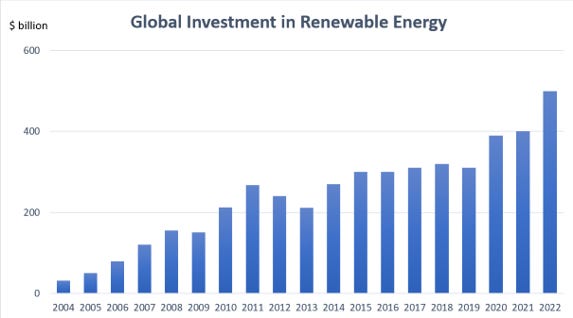

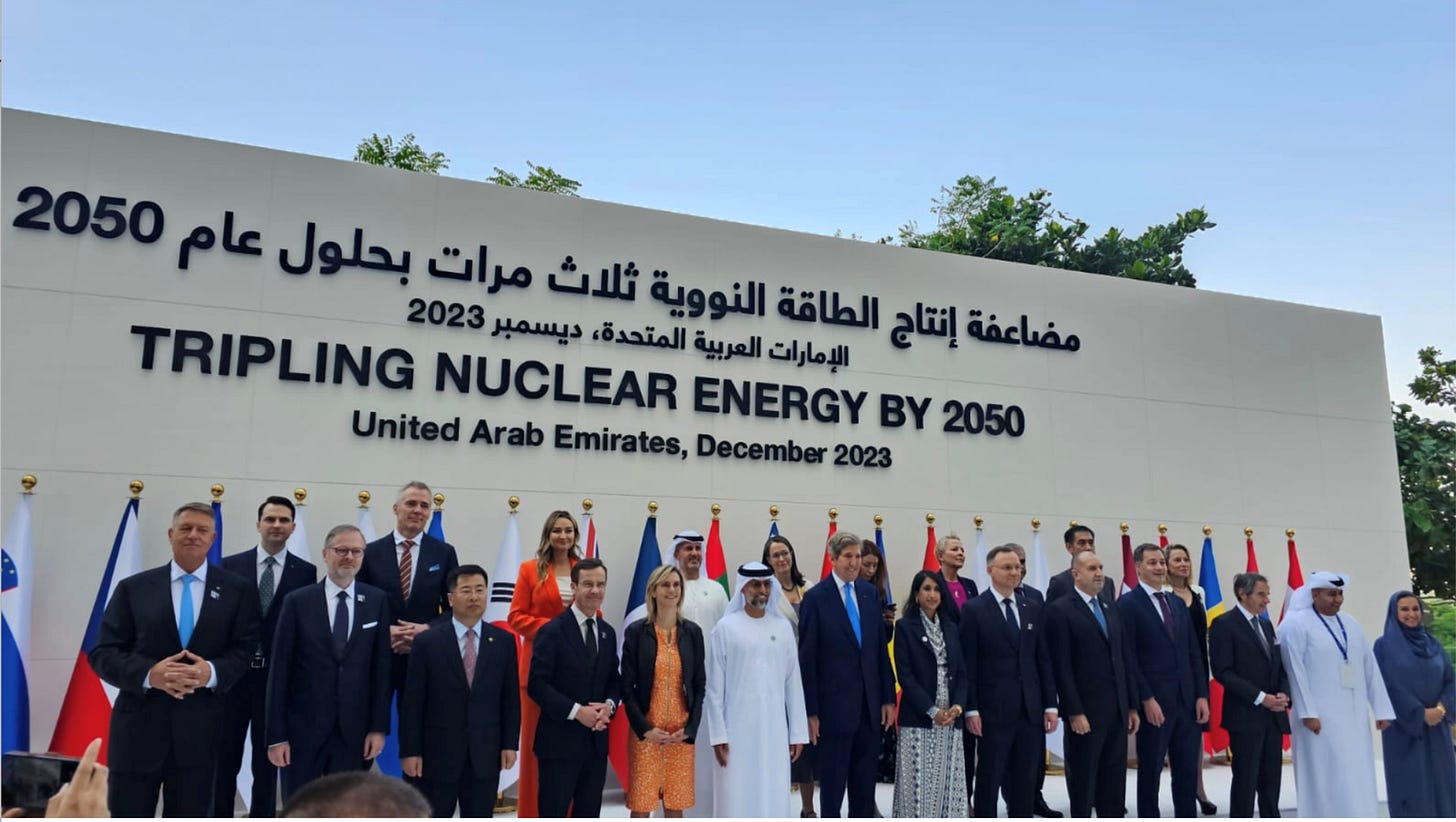




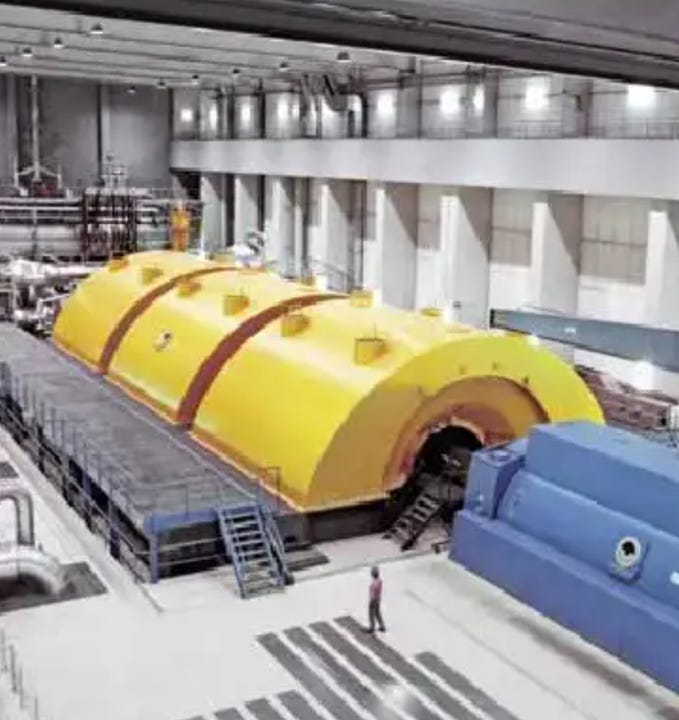
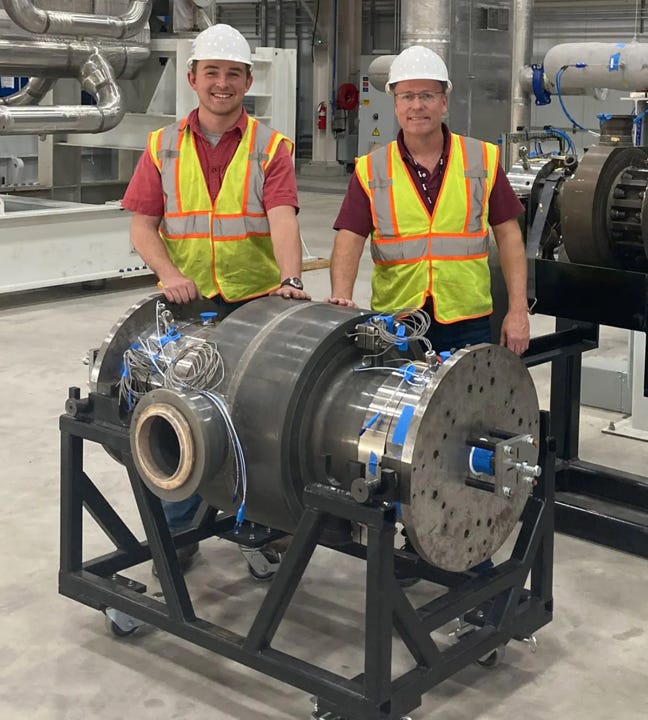

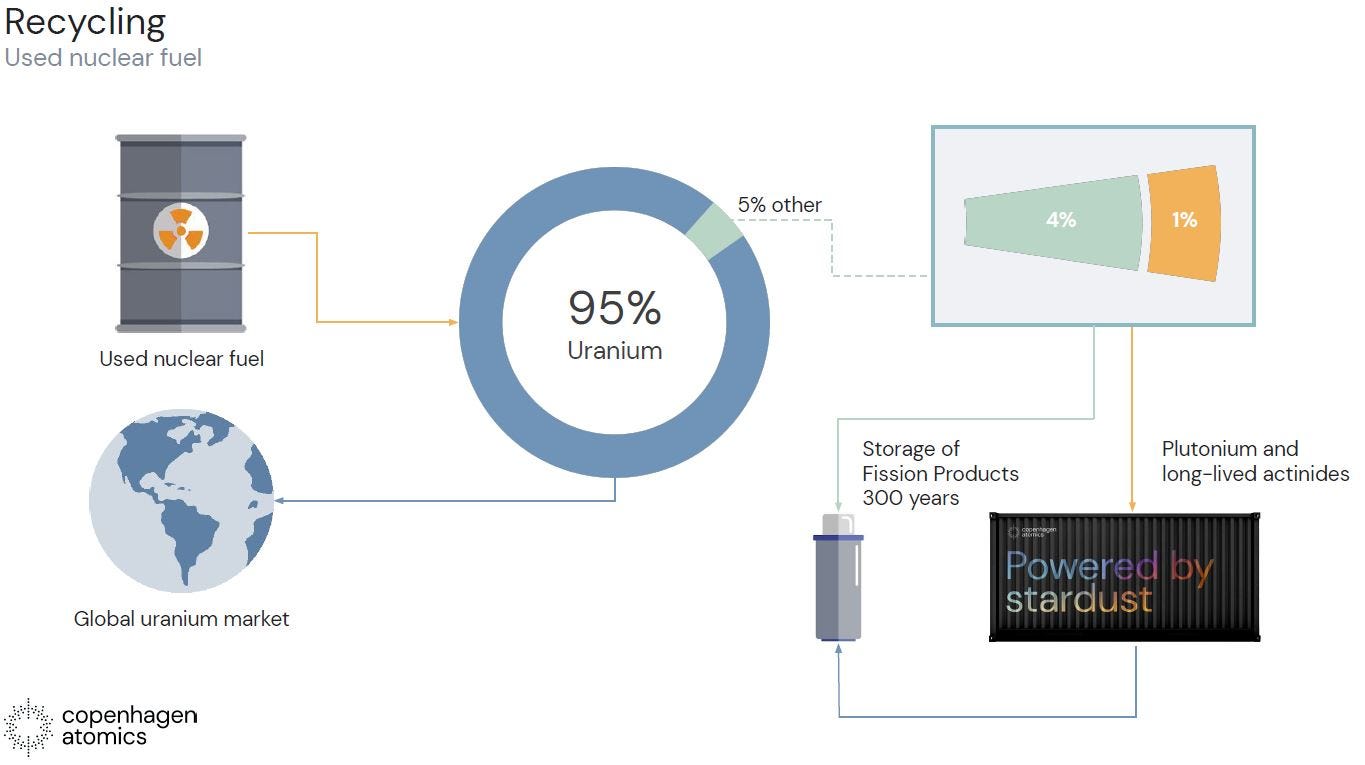
Hello Mr. Townsend
Just inquiring: are you planning on issueing records of your nuclear conferenc in Australia on the 10th of April on Youtube? I would love to view it, but I cannot make to Sydney in April.
Thank you if you take the time to answer.
CONTAINMENT - those Big steel and concrete structures used in current nuke plants protect from accident & terrorists in planes. I have never seen SMR account for the need of containment which I believe is their Achilles heel.